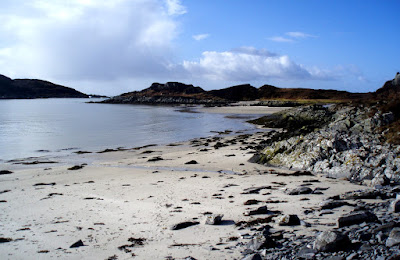 I'm going to risk sounding painfully smug here, but I have recently been handed an opportunity that I'm finding hard to believe is also actual work. I'm taking part as an assistant leader in some Duke of Edinburgh Silver award expeditions, not on foot, but in canoes. I'm even getting the chance to come out with the team on a couple of training days in Ayrshire. Regular readers will know that I'm partial to getting out in my sea kayak on a nice day, but open boats are an unknown quantity to me and I'm really enjoying the challenge of learning new skills.
I'm going to risk sounding painfully smug here, but I have recently been handed an opportunity that I'm finding hard to believe is also actual work. I'm taking part as an assistant leader in some Duke of Edinburgh Silver award expeditions, not on foot, but in canoes. I'm even getting the chance to come out with the team on a couple of training days in Ayrshire. Regular readers will know that I'm partial to getting out in my sea kayak on a nice day, but open boats are an unknown quantity to me and I'm really enjoying the challenge of learning new skills. Andy McNamara, Otter's Tail Adventures
The group is being coached by Andy McNamara from Otter's Tail Adventures, who runs canoeing expeditions throughout Scotland. Just watching Andy pootling about in his boat is a lesson in paddle strokes, (he wears a canoe like a dancer wears ballet shoes) and his patient approach means that after a couple of days with the group, we are all starting to get the hang of it (even me).
Last Sunday the weather was clear, calm and mild so we ventured out for a little coastal paddling, putting in at Doonfoot, Ayr and heading south past the Heads of Ayr to Culzean Bay.
We saw plenty of wildlife on the way round the coast, including shags, eiders, shelduck, razorbills, and even a small flock of sandpipers newly arrived at Dunure. It was great for me to explore a new bit of coast (which I can see from home) and also to enjoy some different views of Arran. Can't wait till the first exped at the beginning of June!
Fantastic views of Arran just across the water.



























